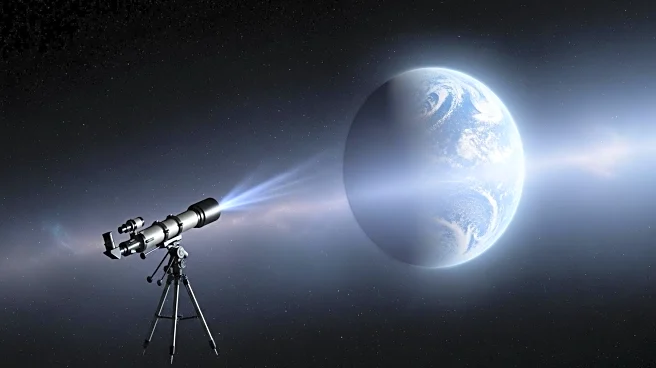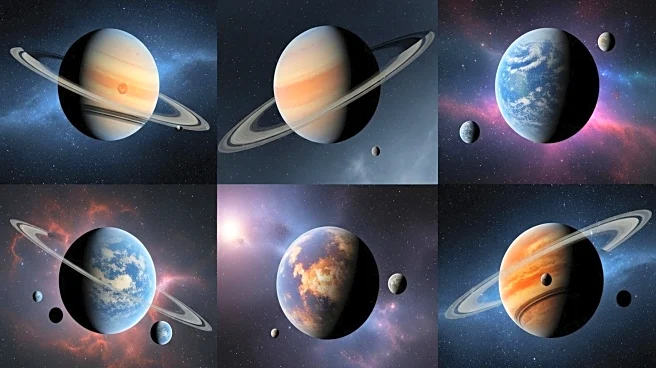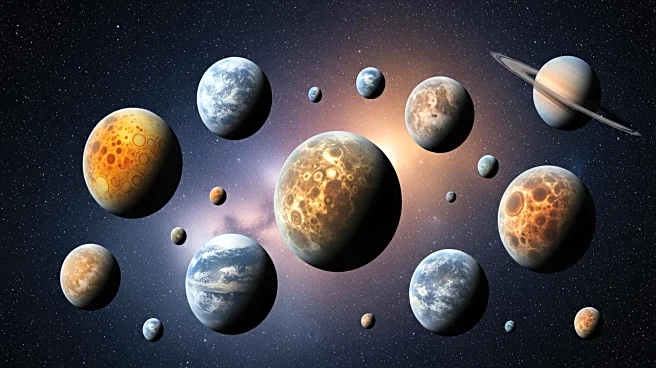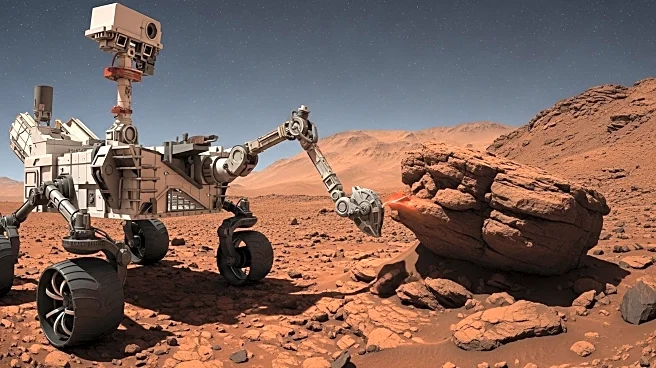What's Happening?
NASA's James Webb Space Telescope (JWST) has detected potential signs of an atmosphere on TRAPPIST-1e, an Earth-sized exoplanet located in the habitable zone of its star system. This discovery marks a significant milestone as it could be the first detection of an atmosphere on a rocky planet within a star's habitable zone. The observations were made as TRAPPIST-1e passed in front of its star, revealing data that suggest the presence of an atmosphere. Researchers caution that while the initial spectrum hints at atmospheric presence, further observations are needed to confirm these findings. The planet's location in the habitable zone suggests conditions where liquid water could exist, making it a prime candidate for further study in the search for life-friendly planets.
Why It's Important?
The potential discovery of an atmosphere on TRAPPIST-1e is crucial in the ongoing quest to find Earth-like planets that could support life. If confirmed, it would be the first time an atmosphere has been detected on a rocky planet in a habitable zone, providing a new target for future exploration and study. This finding could significantly impact the field of exoplanet research, guiding future missions and observations aimed at understanding the conditions necessary for life beyond Earth. The ability to detect atmospheres on distant planets is a key step in assessing their habitability and potential for hosting life, which could have profound implications for our understanding of the universe and our place within it.
What's Next?
Further observations using the James Webb Space Telescope are planned to confirm the presence of an atmosphere on TRAPPIST-1e. These observations will aim to clarify the initial data and determine whether the spectral 'wiggles' indeed indicate atmospheric conditions. If confirmed, TRAPPIST-1e will become a focal point for future studies, potentially involving other telescopes and missions designed to probe its atmosphere and surface conditions. The confirmation of an atmosphere would also likely lead to increased interest and investment in technologies and missions capable of studying exoplanets in greater detail, advancing our understanding of planetary systems and the potential for life beyond Earth.
Beyond the Headlines
The discovery of an atmosphere on TRAPPIST-1e could have broader implications for the study of planetary formation and evolution. Understanding the atmospheric composition and dynamics of such planets can provide insights into the processes that lead to habitable conditions. This could also influence the search for biosignatures, as the presence of an atmosphere is a critical factor in assessing a planet's ability to support life. The findings may also inspire new theoretical models and simulations to predict atmospheric characteristics and their interactions with planetary surfaces, contributing to a deeper understanding of the conditions necessary for life.










